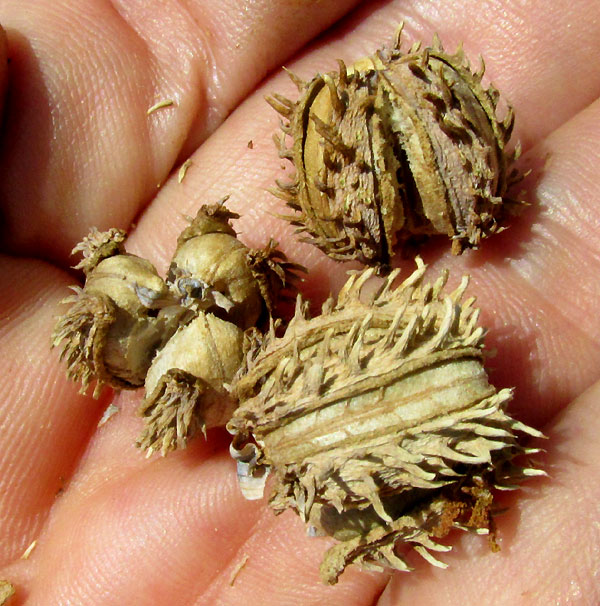Excerpts from Jim Conrad's
Naturalist Newsletter
from the January 21, 2007 Newsletter issued from Yerba Buena Clinic just outside Pueblo Nuevo Solistahuacan, Chiapas, MÉXICO
about 1740 meters in elevation, ± LAT. 17° 11' 27"N, LONG. -92° 53' 35"W
FLOWERING CASTOR-BEANS
Back in Mississippi I grew Castor-Bean plants not only because with their three-ft-across, star-shaped, shiny leaves, strange flowers and astonishingly vigorous growth they're such exotic-looking plants, but also because they enjoy some fame for keeping moles from the garden, and I needed that service. Sometimes in the backs of farm magazines you see Castor-Beans sold as "Mole Plants."
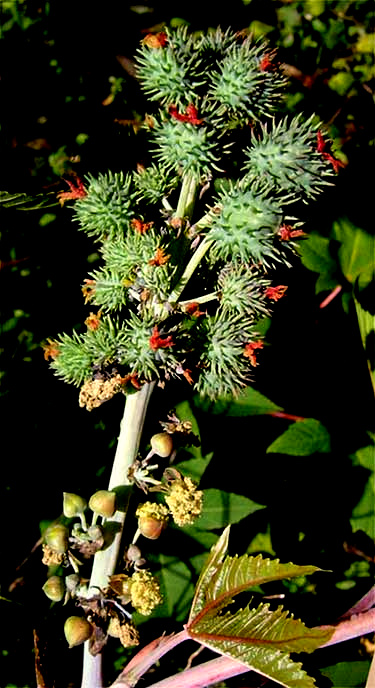
Tunneling moles are supposed to run into the roots and find them either so disgusting that they turn back, or so poisonous that they die. The roots may well be poisonous, for the fruit's thin, plastic-like coat contains ricin, a deadly poison. The name ricin is based on Castor-Bean's Latin name, RICINUS COMMUNIS.
In Mississippi I was proud of my plants for reaching about 12 feet high before the frost got them. Down here Castor-Beans grow as branching trees 30 to 40 feet tall. Despite their stems being herbaceous the plants live for several years.
Castor-Beans belong to the Spurge or Euphorbia Family. Flowers in that family are unisexual, with either the same plant bearing both male and female flowers (monoecious) or plants bearing only male or only female flowers (dioecious). Monoecious Castor-Bean plants have female flowers over male flowers, as seen above.
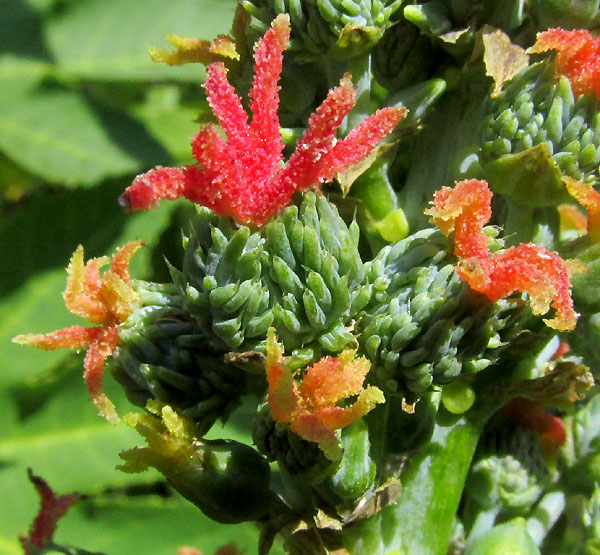
Above, the burry, green things are immature capsular fruits developing from the female flowers' ovaries. The red, fuzzy-looking items are feathery, or "plumose," styles tipped with stigmas. Pollen grains germinate on the stigmas, send pollen tubes down through the styles, and fertilization takes place in ovules inside the spiny ovary.
If you peek beneath one of a Castor-Bean's big, palmately-lobed blades, where it attaches to its petiole, you'll see what's shown below:
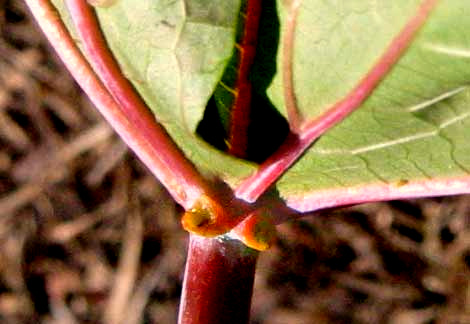
The twin, waxy, yellow goblet-like things are glands. Probably the way these work is that ants visit them to sup on the secretions, then when a herbivore comes along chewing the plant's pretty leaves biting ants are present to protect the leaves.
entry dated May 21, 2022, notes from a camping trip among hills about 7kms ENE of Tequisquiapan, Querétaro state, MÉXICO
elevation about 2020m (6700 ft), near N20.57°, W99.85°
MORE CASTOR PICTURES
A healthy population of Castor Beans grew next to my tent, reminding me that I needed more pictures of the plant. Here's what a whole plant looks like:
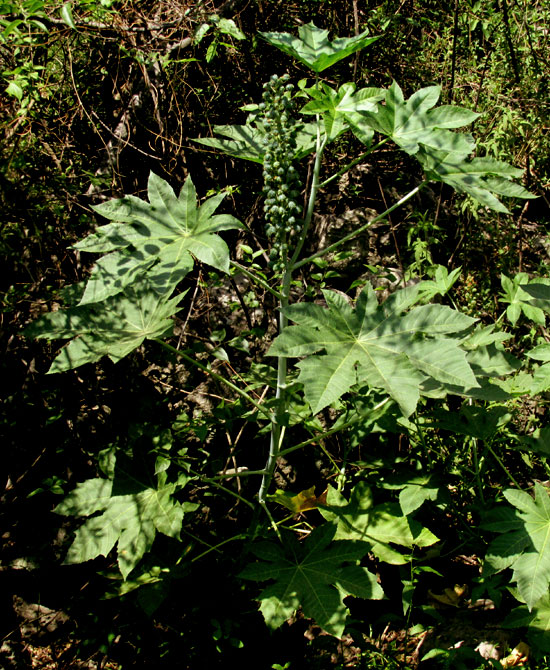
Earlier we got a good view of the female flowers. Here are some male ones, their bundles of stamens ready to release pollen:
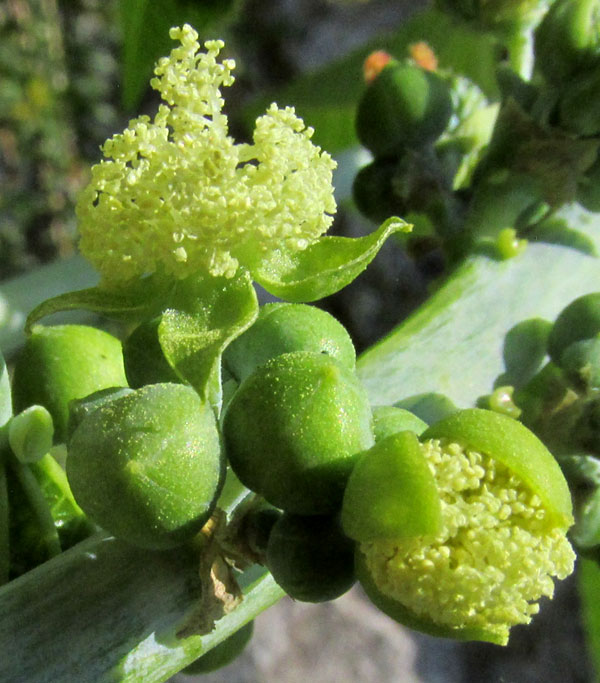
When the Castor's burry fruits mature, they turn brown and split along three sides:
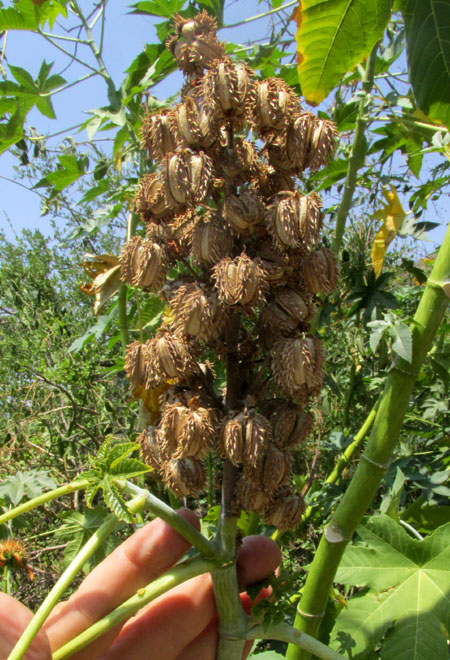
Here are three split fruits, with one of them displaying three beans:
